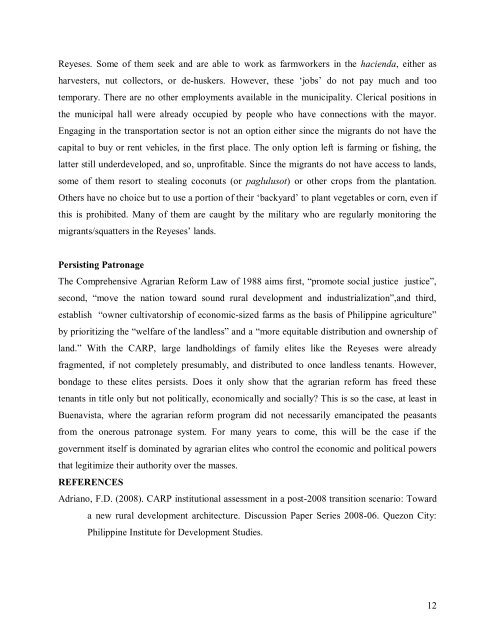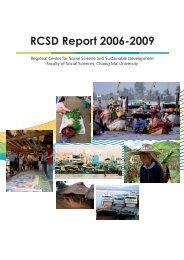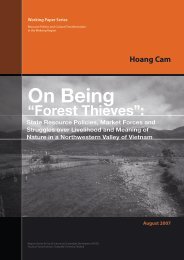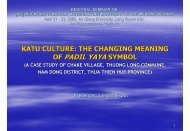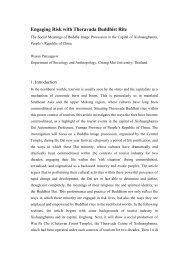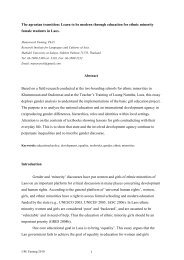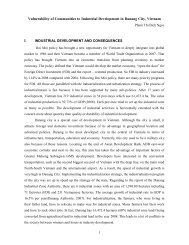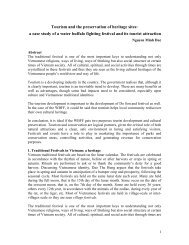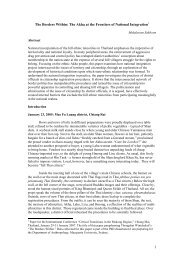Transformation after two decades of agrarian reform ... - RCSD
Transformation after two decades of agrarian reform ... - RCSD
Transformation after two decades of agrarian reform ... - RCSD
Create successful ePaper yourself
Turn your PDF publications into a flip-book with our unique Google optimized e-Paper software.
Reyeses. Some <strong>of</strong> them seek and are able to work as farmworkers in the hacienda, either asharvesters, nut collectors, or de-huskers. However, these ‘jobs’ do not pay much and tootemporary. There are no other employments available in the municipality. Clerical positions inthe municipal hall were already occupied by people who have connections with the mayor.Engaging in the transportation sector is not an option either since the migrants do not have thecapital to buy or rent vehicles, in the first place. The only option left is farming or fishing, thelatter still underdeveloped, and so, unpr<strong>of</strong>itable. Since the migrants do not have access to lands,some <strong>of</strong> them resort to stealing coconuts (or paglulusot) or other crops from the plantation.Others have no choice but to use a portion <strong>of</strong> their ‘backyard’ to plant vegetables or corn, even ifthis is prohibited. Many <strong>of</strong> them are caught by the military who are regularly monitoring themigrants/squatters in the Reyeses’ lands.Persisting PatronageThe Comprehensive Agrarian Reform Law <strong>of</strong> 1988 aims first, “promote social justice justice”,second, “move the nation toward sound rural development and industrialization”,and third,establish “owner cultivatorship <strong>of</strong> economic-sized farms as the basis <strong>of</strong> Philippine agriculture”by prioritizing the “welfare <strong>of</strong> the landless” and a “more equitable distribution and ownership <strong>of</strong>land.” With the CARP, large landholdings <strong>of</strong> family elites like the Reyeses were alreadyfragmented, if not completely presumably, and distributed to once landless tenants. However,bondage to these elites persists. Does it only show that the <strong>agrarian</strong> <strong>reform</strong> has freed thesetenants in title only but not politically, economically and socially? This is so the case, at least inBuenavista, where the <strong>agrarian</strong> <strong>reform</strong> program did not necessarily emancipated the peasantsfrom the onerous patronage system. For many years to come, this will be the case if thegovernment itself is dominated by <strong>agrarian</strong> elites who control the economic and political powersthat legitimize their authority over the masses.REFERENCESAdriano, F.D. (2008). CARP institutional assessment in a post-2008 transition scenario: Towarda new rural development architecture. Discussion Paper Series 2008-06. Quezon City:Philippine Institute for Development Studies.12


